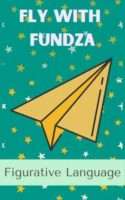Figures of speech use words in imaginative and creative ways to create special meanings or effects. Figures of speech help the reader get a clear and detailed picture of something or someone. You will find figures of speech in stories, poem and plays. We also use figures of speech in our everyday speaking and writing.
Figures of speech may:
- Compare something with something else – ‘You’re a star!’ There are various kinds of comparisons such as similes, metaphors and personification.
- Exaggerate something (e.g. hyperbole) – making it seem much bigger, better or worse than it is – ‘I’ve told you a thousand times not to do that!’
- Understate something (e.g. euphemism) – making something that is unpleasant seem okay – instead of saying someone is fat you could say they are ‘big-boned’
- Use the sounds of letters and words to create an effect, such as ‘splash!’ Examples of this are alliteration, assonance and onomatopoeia.
- Use idioms or proverbs to describe or explain something – for example, ‘actions speak louder than words’.


